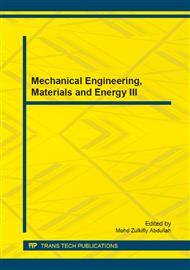p.9
p.14
p.18
p.23
p.28
p.34
p.38
p.42
p.47
Effect of the Process Parameters of Laser Cladding on Microstructure of Ni-Based Titanium Carbide
Abstract:
This paper gets a further study to cladding of Ni-based Titanium Carbide in the surface of die steel of 718, This paper introduces the effect of laser process parameters on the titanium carbide and nickel solid solution and cemented carbide in cladding layer; on that basis, this paper studied the effect of the different of powder paving thickness, laser power and scanning velocity and other parameters on microstructure and properties of cladding layer. By controlling the powder-bed depth, using suitable laser cladding power and scanning speed, we can get the cladding layer of compact structure, no holes or no cracks. Experiments were carried out to get suitable process parameters, and analyzed its mechanism. It has certain significance guiding to improve the laser cladding of 718 die steel quality,
Info:
Periodical:
Pages:
28-33
Citation:
Online since:
December 2013
Authors:
Keywords:
Price:
Сopyright:
© 2014 Trans Tech Publications Ltd. All Rights Reserved
Share:
Citation:


